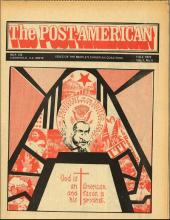ANABAPTISTS
During the sixteenth century there arose groups of Christian people who felt that the work of reformation was only half done by Luther, Calvin, Zwingli and their followers. Though they appreciated the evangelical truths which these reformers had recovered, they were dissatisfied with the way in which the principles were applied. They detected a reluctance to apply biblical principles fearlessly to every area of human life. While appreciating the reality of justification by faith, for example, these “Anabaptists,” as they were inaccurately called, wanted to hear more about radical Christian discipleship and concrete social righteousness. At the time, the movement was regarded as a subversive, fanatical sect, bent upon overturning the gains of the reformation. In actual fact, they only wanted the reformation carried through in all its dimensions. The savage persecutions which were carried out against them represent a sad and shameful chapter in the history of the church. But the vision of radical, biblical Christianity which these Anabaptists held high has not died.
Read the Full Article

